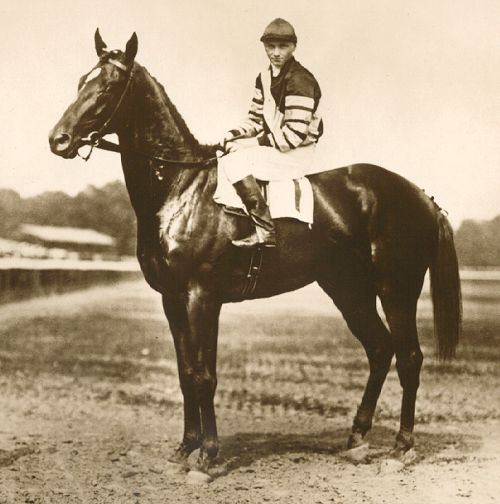The American Triple Crown in thoroughbred flat racing is
based on the English Triple Crown, as most elements of American horse racing
are based on English horse racing. The
English Triple Crown consists of the 2,000 Guineas run on the first Saturday of
May at Newmarket, the Epsom Derby at Epsom Downs in early June and the St.
Leger Stakes at Doncaster Racecourse which is run in the summer.
Both Triple Crowns are restricted for three-year-old colts
and fillies. For many years, geldings
were restricted from some of the races but have been allowed in recent
years. This age restriction makes the
Triple Crown so hard to win.
Thoroughbreds do not mature until they are five years old so they are
the human equivalent of teenagers when they run in Triple Crown races.
Enter Bryan Field
Bryan Field was a prominent turf writer for The New YorkTimes in the early 1900s. In the 1920s,
he proposed that America should have a Triple Crown similar to the English
Triple Crown. He suggested that the
three best candidates for the race be the Kentucky Derby in Louisville, the
Preakness Stakes in Baltimore and the Belmont Stakes in New York.
His idea caught on.
By the 1930s, the idea was established so firmly that a special trophy
was commissioned for past and future winners of the Triple Crown. Because the idea of an American Triple Crown
was not established before the 1930s, thoroughbred superstars like Man o’ War
were never entered in one of the three races.
Man o’ War, for example, never ran in the Kentucky Derby.
Only 12 Winners
The main difference in the American Triple Crown than the
English version is that a horse has to win three grueling races in just five
weeks. In England they have at least
seven weeks, depending on when races were scheduled. As a result, there have only been 11 winners
of the American Triple Crown. They are:
- · Sir Barton in 1919
- · Gallant Fox 1930
- · Omaha, son of Gallant Fox, in 1935
- · War Admiral, son of Man o’ War, in 1937
- · Whirlaway in 1941
- · Count Fleet in 1943
- · Assault in 1946
- · Citation in 1948
- · Secretariat in 1973
- · Seattle Slew in 1977
- · Affirmed in 1978
And, oh yeah -- in 2015 American Pharoah came out nowhere to sweep the Triple Crown and a newfangled race called the Breeder's Cup Classic.
There have been many speculations as to why so few have won
the Triple Crown, as opposed to 13 winners for the English version. The main theories are that it is just too
much to ask for a three-year-old thoroughbred; the rise of international travel
which makes more thoroughbreds able to compete in the races and the
deterioration of the thoroughbred’s overall health as a breed.
Image of the Triple Crown trophy from Wikimedia Commons.


